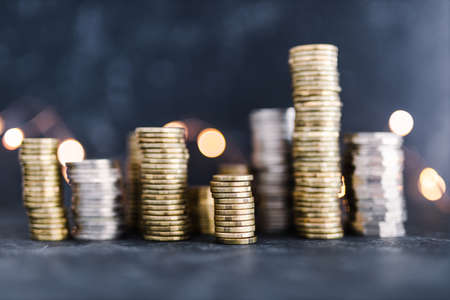Introduction to Gold and Silver as Investments
Gold and silver have been valued for centuries, not only for their beauty but also for their role as stores of wealth. These precious metals have played a crucial role in economies around the world, serving as currency, jewelry, and investment assets. Today, investors turn to gold and silver to hedge against inflation, economic instability, and market volatility.
Historical Significance of Gold and Silver
Both gold and silver have a rich history in global finance. Gold has long been associated with wealth and power, used by ancient civilizations for trade and as a standard for monetary systems. Silver, while also valuable, has had more industrial applications alongside its monetary use. Understanding their historical roles helps investors see why they continue to be popular investment choices.
Why Investors Choose Precious Metals
Investors look to gold and silver for various reasons, including:
- Inflation Hedge: Precious metals tend to retain value when inflation rises.
- Safe-Haven Asset: During economic downturns or geopolitical uncertainty, investors flock to gold and silver.
- Diversification: Adding these metals to an investment portfolio can reduce overall risk.
- Tangible Assets: Unlike stocks or bonds, gold and silver are physical assets that you can hold.
Comparing Gold and Silver as Investments
The choice between gold and silver depends on factors such as price volatility, industrial demand, and liquidity. Below is a comparison of key differences between the two:
| Factor | Gold | Silver |
|---|---|---|
| Market Stability | More stable | More volatile |
| Industrial Use | Limited | High (electronics, solar panels) |
| Liquidity | Easier to trade globally | Slightly less liquid than gold |
| Price Per Ounce | Higher | Lower (more accessible to small investors) |
| Storage Considerations | Takes up less space due to higher value per ounce | Larger volume required for same value as gold |
This comparison highlights the strengths of each metal, helping investors determine which aligns best with their financial goals.
2. Price Volatility and Market Performance
When comparing gold and silver as investment options, its crucial to consider their price volatility and historical market trends. Both metals have unique characteristics that influence their value, and understanding these factors can help investors make informed decisions.
Price Stability: Gold vs. Silver
Gold is generally considered a more stable investment compared to silver. It tends to hold its value better during economic downturns and financial crises. Silver, on the other hand, is more volatile due to its industrial demand and smaller market size.
| Factor | Gold | Silver |
|---|---|---|
| Volatility | Lower – More stable during downturns | Higher – More price fluctuations |
| Main Drivers of Price | Economic stability, inflation, central bank policies | Industrial demand, economic cycles, speculative trading |
| Market Size | Larger – More liquidity | Smaller – Can experience sharp price swings |
(1) Historical Market Trends
The historical performance of gold and silver shows distinct trends. Gold has been a safe haven asset for centuries, often appreciating in value during times of economic uncertainty. Silver, while also valuable, experiences more dramatic price swings due to its dual role as both an investment and an industrial metal.
(1) Golds Performance Over Time
– Gold has consistently maintained its purchasing power over long periods.
– It tends to perform well during inflationary periods and financial crises.
– Central banks around the world hold significant reserves of gold, reinforcing its stability.
(2) Silvers Performance Over Time
– Silver prices fluctuate more frequently due to its industrial applications.
– During economic booms, silver demand increases, leading to potential price surges.
– However, during downturns, silver prices may decline more sharply than gold.
(2) Factors That Drive Their Value
The value of gold and silver is driven by different factors. Understanding these elements can help investors decide which metal aligns better with their financial goals.
(1) Factors Affecting Gold Prices
- Inflation: Gold is often used as a hedge against inflation.
- Monetary Policy: Interest rates and central bank policies impact gold prices.
- Economic Uncertainty: Investors turn to gold during recessions or geopolitical tensions.
- Currencies: A weaker U.S. dollar typically boosts gold prices.
(2) Factors Affecting Silver Prices
- Industrial Demand: Silver is widely used in electronics, solar panels, and medical devices.
- Economic Growth: A strong economy increases silver consumption.
- Mined Supply: Changes in mining production affect silver availability.
- Spectator Influence: Silver markets are more prone to speculative trading.
The differences in price volatility and market performance between gold and silver make them suitable for different types of investors. Those seeking stability may lean toward gold, while those comfortable with risk and potential high returns might consider silver as part of their portfolio.

3. Industrial Demand vs. Safe-Haven Appeal
When comparing gold and silver as investments, one major factor to consider is how they are used beyond just being stores of value. Gold is primarily seen as a safe-haven asset, while silver has significant industrial applications that influence its price movements.
Gold: The Ultimate Safe-Haven Asset
Gold has long been regarded as a hedge against economic uncertainty. Investors turn to gold during times of inflation, currency devaluation, or geopolitical instability. Central banks also hold large reserves of gold, reinforcing its role as a stable and reliable asset.
(1) Store of Value
Gold’s primary function in investment portfolios is to preserve wealth over time. Since it does not corrode or degrade, it has maintained its worth for centuries.
(2) Low Correlation with Other Assets
Unlike stocks or bonds, gold often moves independently from the broader market. This makes it a valuable diversification tool during periods of financial turmoil.
Silver: High Industrial Demand and Price Volatility
Silver’s investment appeal is closely tied to its industrial uses. Around 50% of silver demand comes from industries such as electronics, solar energy, and medical applications. This means that silver prices can be influenced by technological advancements and economic cycles.
(1) Industrial Applications
Silver’s conductivity and antibacterial properties make it essential in various industries. As global demand for green energy grows, silver usage in solar panels is expected to rise.
(2) Higher Price Volatility
Because silver has both investment and industrial demand, its price tends to be more volatile than gold. Economic slowdowns can reduce industrial consumption, leading to sharper price fluctuations.
A Quick Comparison of Gold vs. Silver
| Factor | Gold | Silver |
|---|---|---|
| Main Use | Safe-haven asset | Industrial and investment asset |
| Sensitivity to Economy | Less affected by economic cycles | Highly influenced by industrial demand |
| Price Volatility | Relatively stable | More volatile due to dual demand |
| Diversification Benefit | A strong hedge against market downturns | A balance between industry growth and investment value |
The choice between gold and silver depends on an investor’s strategy. If stability and wealth preservation are priorities, gold may be the better option. However, if you’re looking for potential price appreciation driven by industrial demand, silver could offer more opportunities.
4. Liquidity, Storage, and Accessibility
Understanding Liquidity: Gold vs. Silver
Liquidity refers to how easily an asset can be bought or sold without significantly affecting its price. Both gold and silver are highly liquid assets, but they differ in how quickly and efficiently they can be traded.
(1) Gold’s Liquidity
Gold is widely recognized and accepted globally, making it extremely liquid. Central banks, institutional investors, and individuals all trade gold regularly. Because of its high value per ounce, large transactions can be conducted with relatively small amounts of gold.
(2) Silver’s Liquidity
Silver is also liquid but tends to have higher transaction costs due to its lower price per ounce. This means investors need to sell larger quantities to reach the same dollar amount as gold sales. Additionally, silver markets can be more volatile, leading to greater price fluctuations.
Storage Considerations: Cost and Space
When investing in precious metals, storage is a critical factor. Both gold and silver require secure storage solutions, but their physical characteristics make them different in terms of cost and space requirements.
| Factor | Gold | Silver |
|---|---|---|
| Density & Value | High value in a small space | Larger volume for the same value |
| Storage Costs | Lower due to compact size | Higher due to bulkiness |
| Security Needs | Easier to store discreetly | Takes up more space, requiring larger storage solutions |
| Weight Considerations | Easier to transport in small amounts | Heavier for the same investment value |
Accessibility: Buying and Selling Ease
The ease of buying and selling gold and silver depends on market demand, dealer availability, and transaction fees.
(1) Buying Gold vs. Silver
Bullion dealers, online marketplaces, and financial institutions offer both metals. However, purchasing gold usually requires a higher upfront investment due to its higher per-ounce price.
(2) Selling Gold vs. Silver
Selling gold is generally faster because it has a broader market appeal. Silver sales may take longer due to lower demand and larger volumes needed for substantial returns.
5. Which is the Better Investment?
When it comes to choosing between gold and silver as an investment, the best option depends on your financial goals, risk tolerance, and market outlook. Both metals have their unique advantages and disadvantages, making them suitable for different types of investors.
Advantages and Disadvantages of Gold vs. Silver
| Factor | Gold | Silver |
|---|---|---|
| Market Stability | More stable, less volatile | More volatile, higher price swings |
| Liquidity | Highly liquid globally | Liquid but slightly less than gold |
| Industrial Demand | Mainly for investment and jewelry | High demand in industries like electronics and solar energy |
| Affordability | Expensive per ounce | Much more affordable for small investors |
| Storage & Portability | Easier to store due to higher value per unit weight | Bulkier, requires more storage space |
| Panic Protection (Safe-Haven Asset) | The most recognized safe-haven asset during economic downturns | A safe haven but less trusted compared to gold |
| Potenial for Growth | Sustainable long-term growth with gradual appreciation | Potenially higher percentage gains due to industrial demand spikes |
(1) Who Should Invest in Gold?
If you are looking for a stable asset that holds its value over time, gold is a strong choice. It is best suited for:
- Long-term investors: Those who want a reliable store of value over decades.
- Diversification seekers: Investors who want to hedge against inflation and economic downturns.
- Larger capital investors: Those with significant capital who can afford gold’s higher price per ounce.
- Crisis protection: Investors who prioritize stability during uncertain times.
(2) Who Should Invest in Silver?
If you prefer a more affordable entry into precious metals with higher growth potential, silver might be a better fit. It is ideal for:
- Bargain investors: Those looking for a lower-cost investment with potential upside.
- Tactical traders: Investors comfortable with short-term price volatility.
- Diversified portfolios: Those who want exposure to both monetary and industrial demand.
- Younger or new investors: Beginners looking to start investing in precious metals without a large upfront cost.
(3) Final Considerations: Which One is Right for You?
Your decision should be based on your financial objectives. If you seek long-term security and stability, gold is the better option. However, if youre looking for affordability and growth potential, silver may offer more opportunities. Many investors choose to hold both metals as part of a diversified portfolio to balance risk and reward effectively.


